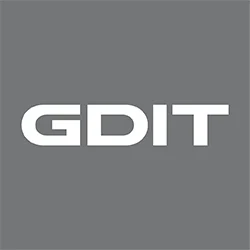Mission Partner Environments (MPEs) allow the military and trusted partners to communicate, collaborate and share sensitive, classified information securely and in real-time. And as technology continues to rapidly evolve, building and maintaining MPEs is both more complex and more important than ever.
We asked U.S. Army veteran and GDIT MPE Lead, Eric Tapp, about how the cloud is transforming the modern MPE and how the military and mission partners can leverage the power of the cloud to optimize MPE operations. Here’s what he had to say:
Eric, you’ve had lots of experience with MPEs. Why are they so important?
MPEs are how the Department of Defense and mission partners collaborate to counter peer and near-peer adversaries. The DoD employs hundreds of mission command applications, and all of them have to interoperate with each other and with mission partners. GDIT has been supporting MPEs for more than 20 years and we apply that experience to innovate to enable mission partner interoperability. We know where the improvement opportunities exist, and where we can affect change. And so just as MPEs are critically important, it’s also critically important to continually advance them so that they align with the constantly evolving technology landscape that we all operate within – us and our adversaries.
“Just as MPEs are critically important, it’s also critically important to continually advance them so that they align with the constantly evolving technology landscape that we all operate within – us and our adversaries. ”
Speaking of the evolving technology landscape, there is a lot of attention right now on things like artificial intelligence, machine learning and even Zero Trust. How are those things used in MPE environments, and how does the cloud make that possible?
Well it all starts with data. MPEs are all about interoperability and facilitating the use of AI/ML goes hand-in-hand with cloud. In MPEs today, you have a multitude of networks that can be extremely segmented. While the cloud could solve some of that segmentation in the short term, the cloud can also be used to rapidly scale or descale to meet requirements. That’s important because historically, if a crisis evolves to a point where a coalition is formed, a new network will be created in order to facilitate information-sharing among members of that particular coalition. Continuing down this network-centric path, the cloud will absolutely help to facilitate a reduction in the time it takes to bring these networks up, as well as a reduction in the cost but you’re still going to have segmentation issues. So we have to get to a point where we truly are data-centric so that we have true interoperability.
Zero Trust is a key part of that. We build MPEs with a Zero Trust approach to facilitate as much data sharing as possible. So, I’d say Zero Trust is a facilitator of information sharing, and then from there AI and ML can be better leveraged in the cloud in an operational capacity for things like automation, for example, within the MPE.
What is the biggest challenge when it comes to leveraging the cloud in MPE environments?
Well, data is one of them, as I mentioned, and I’d say policy is another. MPEs, by nature because they’re collaborative environments, sit at the intersection of policy and technology. Governing how we bring cloud and cloud-based technologies and data together and how we share them and use them to achieve a common objective requires some guardrails. You need specific authorizations in place that mitigate risk and outline clear protocols, ownership, roles, responsibilities, permissions, etc. There also needs to be an understanding of the nuances of how risk is identified, accepted, and mitigated in the government information systems that are part of an MPE. GDIT has a lot of experience in this area and we’re working today with others who have similar experience to provide the government with clear best practices on this front.
What do you think the future holds for MPEs when it comes to wider adoption and use of the cloud?
I think that we're going to go forward in a mixed environment, where we’re partially network-centric and partially data-centric – but I think we’ll move toward more data centricity as tools and teams demand it. I think the policy uncertainty will still be there, but it will get better. I think the creative application of newer technologies especially when you start to look at things like leveraging AI algorithms that understand security classifications and can start to do predictive analysis of data going across the network to make intelligent decisions on where data goes, where it belongs, if the tags are correct and appropriate and so forth. I also think we’ll be able to leverage AI to facilitate even more data sharing by doing things like deploying classification bots that offer security classification guidance or document use guidance – and doing things like that will significantly assist in the effort to become more data-centric.






